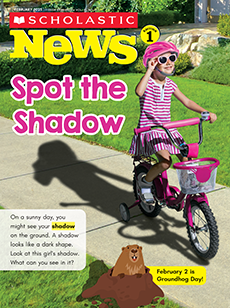A guide for using our resources
Children will observe squirrels to learn about their behavior and habits.
Science Focus: making observations
CCSS (and states that have similar standards): SL.1.2, RF.1.3, RI.1.1, RI.1.2, RL.1.1, W.1.8
Simple, spectacular ideas to boost your lessons.
Paired Text: Nuts to You by Lois Ehlert
Paired Text: Nuts to You by Lois Ehlert
- This book uses gorgeous artwork and rhyming text to tell a simple, funny story of an intrepid squirrel who sneaks into a child’s room—a child who turns out to be very clever. Realistic behavior on the part of the squirrel is a scientific plus.
Phonics Hunt: short a
Phonics Hunt: short a
- Work together to find and circle every short a. How many can you fi nd?
Hands-On Activity: Observe Squirrels!
Hands-On Activity: Observe Squirrels!
Skill: observation and recording
Materials: “Observe a Squirrel” skill sheet, clipboards, pencils, crayons
- Go on a walk to observe squirrels. Remind children to use their senses for observation. What do they see? What do they hear? They must be quiet so they don’t scare the squirrels away!
- Stop wherever you see one or more squirrels. Kids can draw whichever one they find most interesting. Have kids write the place they saw their squirrel and sketch what the squirrel looked like.
- Back in class, kids can add color and detail to their drawings. They can also complete the sentence by dictating or writing what the squirrel was doing or any descriptor they like!
